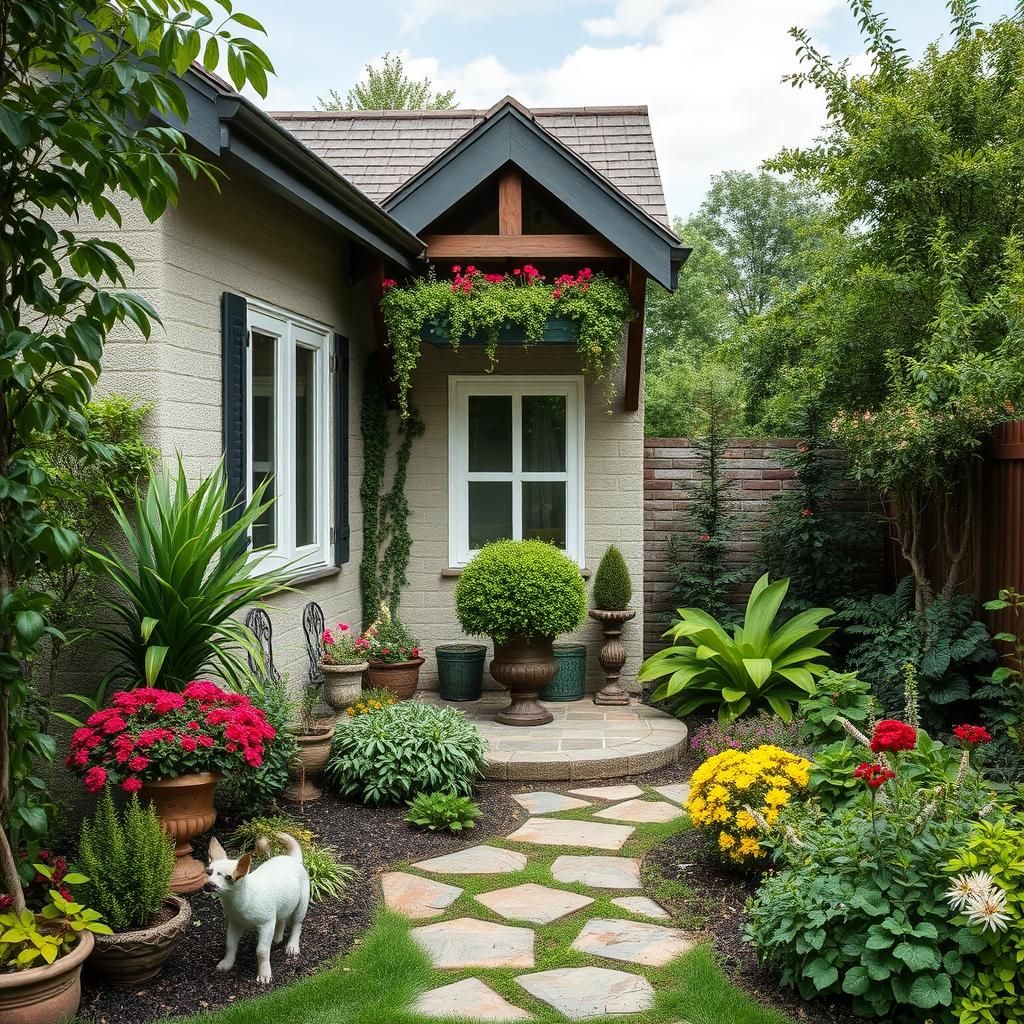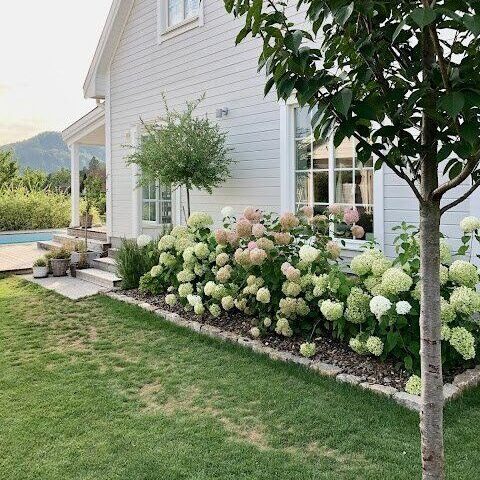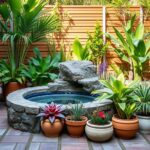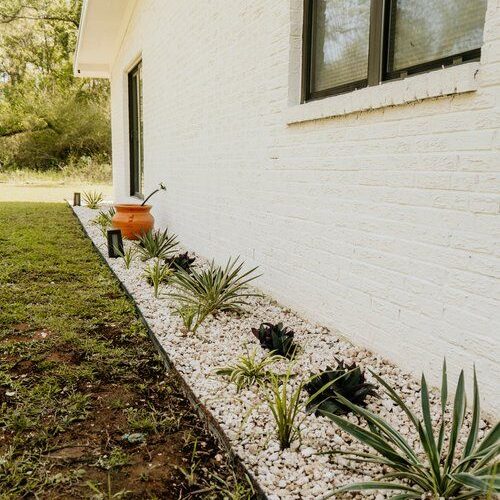Discover the Best Plants to Plant Near House for a Beautiful Garden

Creating a beautiful garden around your home can enhance its curb appeal and provide a serene outdoor space for relaxation. Choosing the right plants to place near your house is crucial, as they can transform your landscape and complement your home’s architecture. From colorful flowers to lush greenery, the right selection can add texture and visual interest to your garden. In this article, we will explore some of the best plants to plant near your house, considering factors such as climate, maintenance, and aesthetics. Discover how to cultivate a vibrant garden that welcomes you and your guests.
Best Plants to Plant Near Your House
When selecting the best plants to plant near your house, it's essential to consider factors such as climate, soil type, sunlight, and the overall aesthetic you wish to achieve. Plants can provide numerous benefits, including enhancing curb appeal, offering shade, and even improving air quality. Some of the top choices for near-house planting include low-maintenance options like ornamental grasses, fragrant herbs such as lavender, and vibrant flowers like daylilies. Not only do they beautify your outdoor environment, but many also attract beneficial wildlife like bees and butterflies, contributing to a healthy ecosystem right outside your doorstep.
Low-Maintenance Plants
Low-maintenance plants are ideal for individuals who want a beautiful landscape without the need for extensive upkeep. Species like sedum, hostas, and coneflowers require little water and minimal pruning, making them perfect for busy homeowners. These plants not only survive but also thrive with minimal intervention, providing a lush appearance that enhances the look of your house while conserving both time and resources.
Fragrant Herbs
Fragrant herbs, such as basil, rosemary, and thyme, offer both culinary and aromatic benefits when planted near your home. They thrive in sunny locations and can be easily incorporated into garden beds or container gardens on patios. Beyond their delightful scents, these herbs are excellent for attracting pollinators, making them a practical choice for enhancing your garden's biodiversity.
Flowering Plants for Curb Appeal
Flowering plants like roses, daylilies, and petunias add a vibrant splash of color to your landscape, significantly boosting your home's curb appeal. These perennials bloom season after season, providing consistent visual interest throughout the year. By selecting a mix of flowering plants with varying bloom times, you can create an engaging and dynamic garden that showcases beauty in every season.
Native Plants
Opting for native plants is a smart move when considering sustainability and low maintenance. These plants are well-adapted to your local climate and soil conditions, requiring less water and fertilizer compared to non-natives. Moreover, native species like echinacea, black-eyed Susans, and milkweed can help support local wildlife, including birds and beneficial insects, creating a thriving natural habitat right at your home.
Ground Covers
Ground covers like creeping thyme, ajuga, and moss are excellent for reducing weeds and enhancing the overall design of your garden. They can fill in empty spaces and prevent soil erosion, making them practical choices for sloped areas. Additionally, they require less maintenance than traditional grass lawns and can provide year-round greenery, which is particularly beneficial in shaded areas where other plants may struggle to grow.
| Plant Type | Benefits | Maintenance Level |
|---|---|---|
| Low-Maintenance Plants | Requires less water and care | Low |
| Fragrant Herbs | Culinary use and pollinator attraction | Moderate |
| Flowering Plants | Enhances curb appeal with color | Moderate |
| Native Plants | Supports local wildlife and low maintenance | Low |
| Ground Covers | Reduces weeds and soil erosion | Low |
What is the best landscape around the foundation of a house?

The landscape around the foundation of a house plays a crucial role in maintaining its structural integrity and enhancing the overall aesthetic appeal. When designing this area, it is essential to choose plants, materials, and features that contribute positively to both the foundation and the environment. Here are some key considerations and components for the best landscape design around a house foundation.
1. Choosing the Right Plants
Selecting appropriate plants is vital for a safe and beautiful landscape. Look for plants that do not have invasive root systems, as they may damage the foundation over time.
- Low-maintenance perennials: Consider perennials that are native to the region to reduce upkeep.
- Drought-resistant species: Opt for plants that require minimal watering to prevent excess moisture around the foundation.
- Ground cover plants: Use ground cover to prevent soil erosion and maintain moisture levels.
2. Maintaining Proper Drainage
Proper drainage is essential to prevent water accumulation near the foundation's base, which can lead to significant structural issues.
- Gradual slope: Ensure that the landscape slopes away from the house to direct water flow.
- French drains: Install French drains if necessary to efficiently channel excess water away from the foundation.
- Rain gardens: Create rain gardens to absorb and filter runoff, contributing to effective drainage.
3. Incorporating Hardscaping Elements
Hardscaping features can enhance the aesthetic appeal of the landscape while also providing functional benefits.
- Paved walkways: Install pathways made from stone, brick, or concrete to enhance accessibility and prevent soil compaction.
- Retaining walls: Consider building retaining walls to manage slopes and prevent soil erosion.
- Decorative gravel: Use gravel beds as an attractive element that also improves drainage.
4. Utilizing Organic Mulch
Organic mulch is an excellent addition to your landscape, as it promotes soil health and contributes to moisture retention.
See also:
- Weed suppression: Mulch effectively suppresses weed growth, reducing competition for nutrients and moisture.
- Temperature regulation: It helps regulate soil temperature, creating a healthier environment for plants.
- Gradual nutrient release: As it decomposes, organic mulch releases nutrients back into the soil.
5. Regular Maintenance Practices
Maintaining the landscape around the foundation is essential for its appearance and function.
- Pruning: Regularly prune plants to prevent overgrowth that can obscure drainage paths.
- Weeding: Keep the area free of weeds to limit competition for resources.
- Soil testing: Conduct soil tests to monitor nutrient levels, ensuring that the landscape remains healthy over time.
What is the best thing to put around the foundation of a house?

To protect the foundation of a house, the best things to put around it are well-draining materials and landscaping features that help divert water away from the foundation. Effective options include gravel, mulch, and vegetation that have deep root systems. These materials not only improve drainage but also minimize erosion, thus preserving the integrity of the foundation over time.
Importance of Drainage
Proper drainage around the foundation is crucial for preventing water accumulation, which can lead to significant damage. Here are some reasons why drainage matters:
- Prevents Water Damage: Effective drainage helps in minimizing water pooling near the foundation, thus preventing cracks and leaks.
- Reduces Erosion: Properly designed drainage systems protect soil from being washed away, maintaining the stability of the foundation.
- Enhances Longevity: By ensuring that the foundation remains dry, the overall lifespan of the structure is increased significantly.
Best Materials for Foundation Surrounding
When considering materials to use around the foundation, there are several options that provide excellent support for drainage. The following materials are highly recommended:
- Gravel: Its loose structure allows for quick water movement, making it one of the best choices for drainage.
- Mulch: Organic mulch options not only aid in drainage but also help retain moisture in the surrounding soil, benefiting nearby plants.
- Soil Berms: Creating raised areas of soil can direct water away from the foundation, enhancing drainage effectively.
Landscaping Techniques
Incorporating strategic landscaping around the foundation can enhance water flow management. Consider these techniques:
- Planting Vegetation: Trees and shrubs with extensive root systems can absorb excess moisture, providing a natural drainage solution.
- Using Slopes: Designing the yard with a slight slope away from the house encourages water to flow away from the foundation.
- Avoiding Grading Towards the Foundation: Ensure that all areas around the house are graded to move water away, preventing any potential pooling.
Regular Maintenance Needs
Staying on top of maintenance is essential for keeping the foundation secure. Here are some regular tasks that should be performed:
- Clearing Debris: Regularly remove leaves and debris from gutters and drainage paths to ensure proper water flow.
- Inspecting for Cracks: Periodically check for any signs of cracks in the foundation and address them immediately to prevent further issues.
- Trimming Vegetation: Keep plants trimmed to prevent root systems from interfering with the foundation while still allowing for effective drainage.
Conclusion of Best Practices
Implementing best practices for water management and foundation protection is paramount for any homeowner. Here are some practices to consider:
- Utilizing Drainage Systems: Install and maintain French drains or sump pumps if necessary for areas prone to heavy rainfall.
- Regular Inspections: Perform regular assessments of drainage systems and foundation health to identify issues early.
- Incorporating Hardscaping: Use hardscaping features like patios or pathways that encourage water to flow away from the structure.
What should you not plant near a foundation?

When considering landscape planting near a home’s foundation, it is crucial to choose plants that will not cause damage or create maintenance issues. Some species can lead to problems such as excessive moisture retention, root invasion, and structural damage. Below are various plant categories that should be avoided close to foundations.
1. Large Trees
Large trees have extensive root systems that can extend far beyond their canopy. Planting them near a foundation is not advisable for several reasons:
- Root Damage: Roots can penetrate and damage foundations, leading to cracks and structural issues.
- Water Diversion: Trees absorb significant amounts of water, which can alter soil moisture levels around the foundation.
- Shading: They may cast unwanted shade on the foundation, creating conditions for mold or mildew.
2. Invasive Plants
Invasive plants can wreak havoc if planted near a home. They tend to outcompete native plants and can be very aggressive in their growth patterns:
- Root Spread: Their roots can spread uncontrollably, leading to potential damage to piping and foundation.
- Maintenance Issues: They require frequent management to prevent them from taking over, which can be time-consuming.
- Loss of Biodiversity: Their dominance can suppress local ecosystems and reduce biodiversity in the landscape.
3. Heavy Mulching Plants
Certain plants, like those that thrive under heavy mulch conditions, may not be suitable for planting near foundations:
See also:
- Moisture Retention: They can hold excessive moisture against the foundation, increasing the risk of water damage.
- Drainage Problems: Mulch plants might hinder proper drainage, causing water to pool around your foundation.
- Termite Attraction: High organic matter near the foundation can attract pests, including termites.
4. Climbing Vines
Climbing vines can be aesthetically pleasing but pose several risks when planted near a foundation:
- Wall Damage: They can cling to walls, promoting moisture retention and potential damage to siding and foundation surfaces.
- Invasive Growth: Vines can rapidly grow and cover air vents, which is detrimental to the ventilation of your home.
- Pest Habitats: Dense foliage can offer shelter for pests that can damage both plants and the structure of your home.
5. Shrubs with Aggressive Roots
Some shrubs, while often attractive for landscaping, have root systems that can cause significant problems:
- Foundation Displacement: Aggressive roots can disrupt the integrity of the foundation, leading to shifting or cracking.
- Water Absorption: They may absorb too much water from surrounding soil, impacting both the soil structure and moisture balance.
- Increased Maintenance: Managing their growth and root systems can require more effort to ensure that they do not encroach on critical foundation areas.
What is the rule of 3 in landscaping?

The Rule of 3 in landscaping refers to a design principle that suggests that groupings of three are more visually appealing and harmonious than groupings of other numbers. This concept stems from the idea that odd numbers tend to create a more natural look and draw the eye in a more engaging manner. By using groups of three, landscapers can enhance the overall aesthetic of a space, leading to a balanced and appealing landscape design.
What is the Origin of the Rule of 3?
The Rule of 3 has its roots in both art and nature, where the use of three elements creates a sense of completeness. Here are some factors that contribute to its origin:
- Artistic Principles: Artists have long understood that groupings of odd numbers break the symmetry and create a focal point.
- Natural Occurrences: Many natural elements often appear in threes, such as flowers, leaves, and even trees.
- Psychological Impact: Research suggests that humans tend to process information in threes, making it easier to remember and visualize.
Practical Applications of the Rule of 3 in Landscaping
The Rule of 3 can be applied in various ways to enhance landscape aesthetics. Here are some common applications:
- Grouping Plants: Use clusters of three different plant species to create visual interest and diversity.
- Pathways and Hardscaping: Incorporate three different materials in paths or patio designs to add texture and complexity.
- Plant Heights: Place three different plants of varying heights in a single arrangement to establish layers and depth.
Benefits of Using the Rule of 3
Incorporating the Rule of 3 can offer multiple benefits in landscaping design:
- Enhanced Visual Appeal: Groupings of three can create a focal point that attracts attention and enhances beauty.
- Improved Balance: The principle encourages a balanced distribution of plants and features, preventing cluttered designs.
- Simplicity and Clarity: Using the rule simplifies decision-making in design, helping landscapers create coherent designs.
Common Mistakes When Applying the Rule of 3
While the Rule of 3 is a helpful guideline, some mistakes can undermine its effectiveness. Here are common pitfalls to avoid:
- Forgetting Variability: Sticking strictly to three of the same height, color, or type can lead to monotony; introduce variety.
- Overcrowding: Applying too many groups of three in close proximity can create chaos instead of harmony.
- Neglecting Scale: Ensure that the groups of three are proportionate to the surrounding spaces and elements to maintain balance.
Examples of the Rule of 3 in Landscape Design
Several landscape designs effectively utilize the Rule of 3 to achieve stunning results. Here are some examples:
- Flower Beds: A flower bed featuring three types of flowers in clusters creates visual dynamism and attracts pollinators.
- Tree Planting: Planting three trees in a triangular formation can frame a view while providing shade.
- Seating Areas: Arranging three seating elements around a fire pit or a focal point can invoke conversation and gathering.
Questions from Our Readers
What are the best plants for attracting pollinators near my house?
Plants such as lavender, bee balm, and sunflower are excellent choices for attracting pollinators like bees and butterflies. These plants not only add beauty to your landscape but also create a thriving habitat for essential insects, which can enhance the overall health of your garden.
Which low-maintenance plants are suitable for areas near a house?
For those seeking low-maintenance options, consider plants like sedum, daylilies, and ornamental grasses. These varieties require minimal care and can tolerate various environmental conditions, making them perfect for busy homeowners who still want a lovely garden.
Are there any plants that can help with home insulation when planted near the house?
Yes, evergreen trees and shrubs can significantly contribute to home insulation by acting as windbreaks. Planting them strategically around your house can reduce heating costs in the winter and keep your home cooler in the summer by providing shade.
What are the best edible plants to grow near my house?
Some of the best edible plants for home gardening include herbs like basil, mint, and rosemary, as well as vegetables like tomatoes and peppers. These plants are not only delicious but also provide fresh produce right at your doorstep, enhancing your culinary experiences.
See also:

If you want to read more articles like Discover the Best Plants to Plant Near House for a Beautiful Garden, we recommend you check out our Landscaping category.
Leave a Reply
Related Articles